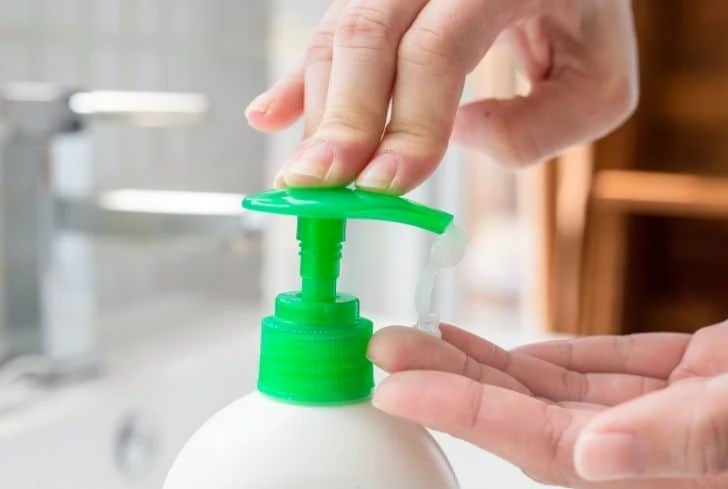Soap dispensers allow you to offer liquid or foam soap alongside the washbasin in a streamlined and economic way. Users simply activate the mechanism by pump or sensor and a set amount of hand soap is ejected onto their hands.
Compared to traditional faucets and soap bars, these dispensers reduce germs on bathroom surfaces and are more hygienic. Additionally, the touch-free operation makes them more accessible for people of all ages and abilities.
Cost-effectiveness
Soap dispensers are a cost-effective alternative to soap bars, especially in high traffic areas. They allow you to supply guests with just the right amount of soap per usage, reducing waste and minimizing soap costs. In addition, they help you to control the spread of germs and bacteria that are transmitted through bar soap.
Moreover, unlike soap bars that may fall and create a slippery floor, liquid soap dispensers are less likely to cause accidents. They also save on counter space. In addition, they are easy to clean and can be wiped down with the same cleaning products that you use to wipe your countertops.
Additionally, liquid soap dispensers promote hygiene, as users don’t need to touch the pump manually, which helps reduce the transfer of pathogens. This is important for restaurants, industrial workplaces, and other public facilities that rely on soap dispensers to maintain hygiene standards.
Compared to bar soaps, liquid dispensers are easier to refill, which can be an issue in large facilities where you need to fill up a lot of sinks at once. Clossed cartridge Soap dispensers are quicker and simpler to refill than bulk fill dispensers, which can be a messy process with drips and spills requiring extra cleanup.
Safety
Hand washing is an important element of good hygiene, but soap dispensers can become contaminated with germs and bacteria. This can pose a safety risk to users, especially in health care settings. Liquid soap dispensers are particularly prone to contamination. Fortunately, there are ways to reduce the risk of infection and keep your dispensers safe.
Soap dispensers are available in a variety of styles and materials. Some are made of glass, plastic, melamine, resin, ceramic, or stainless steel. Choosing the right dispenser depends on the type of washroom and environment in which it will be mounted. For example, if you’re planning to mount the dispenser in an open area, consider a wall-mounted model. This style is less likely to be damaged or break due to repeated use.
Another way to protect guests’ hands is by installing sensor-activated soap dispensers. These dispensers are easy to clean and prevent the spread of germs and bacteria in your washroom. They also allow you to track the number of dispenses and ensure that your guests are using enough soap.
It’s also a good idea to invest in a high-capacity dispenser that can provide more dispenses per refill. This will help your janitorial staff save time and money while still ensuring that your guests have adequate soap on hand. Visible alert systems can also make it easy for your janitorial team to see when soap or hand sanitizer is running low, reducing the likelihood of them waiting until the next cleaning to replace the container.
Durability
Soap dispensers are an important addition to any restroom because they help limit cross-contamination and the spread of illness. They also improve the aesthetic of the space and show visitors that you care about the cleanliness of your facility. Luckily, there are many options available for soap dispensers, so you can find one that fits your aesthetic and budget.
The best automatic soap dispensers prioritize durability and practicality. They are easy to install, use and maintain, which helps reduce costs in the long run. They’re also available in a variety of colors and materials to suit any design scheme. These dispensers can be used for commercial and public spaces as well as private bathrooms.
This stainless steel dispenser has a modern appearance with a sleek design that complements most decor schemes. It’s also durable and sanitary, with a touchless operation that reduces the risk of germs and bacteria spreading between users. This dispenser is made from high-quality stainless steel and features a unique diamond texture that adds an elegant look.
The best part about this dispenser is that it’s easy to refill from above the counter, saving you time and effort. It also has a larger capacity than other models, so it won’t need to be refilled as often. It’s also offered in several finishes to match other VIGO home fixtures, including kitchen faucets and sink strainers.
Convenience
A soap dispenser can be a convenient option for kitchens and bathrooms. It saves space on countertops and helps keep them clean. It also eliminates the need for people to touch a potentially dirty bottle or soap bar when washing their hands, which can reduce germs and bacteria. It also allows people of all ages and abilities to access the soap easily. There are a number of different styles and designs to choose from, so you can find one that fits your style preference.
Another advantage of a soap dispenser is that it can be used for other liquids as well, such as hand sanitizer or lotion. This makes it a great addition to any washroom, including public restrooms and schools. These dispensers can be wall-mounted or freestanding and are made of durable materials. They have a stylish appearance and come in several colors, which make them a good choice for any décor.
Hotel soap dispensers are a great way to improve guest satisfaction and reduce environmental waste. They also help reduce costs, as hotels do not need to constantly purchase and replace small soaps. Additionally, they can be refilled with bulk soap, which is usually less expensive than small individual-wrapped bars. This means that hotels can redirect these funds to other areas of the business. They can even monitor the level of soap through a window, which can be an important feature for those with allergies or sensitive skin.
